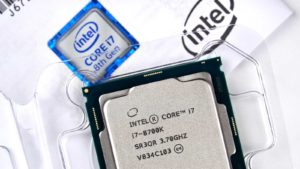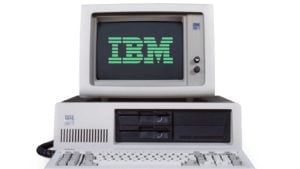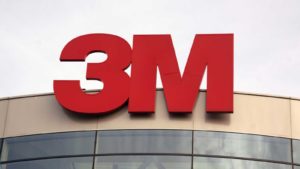Blue-chip stocks are securities issued by large companies that have a good reputation and reliable track record of delivering value to shareholders. Blue-chip companies are typically well run going concerns that are financially fit and have operated for many years while issuing strong earnings results, but there are some blue-chip stocks to sell that have failed to perform.
Examples of blue chip companies include Coca-Cola (NYSE:KO), Apple (NASDAQ:AAPL) and Berkshire Hathaway (NYSE:BRK-A, NYSE:BRK-B). However, while most blue chip companies have been around for many years and are well-known both within and outside of the investing community, not all blue chip stocks continue performing at a high level.
On the contrary, many blue chip stocks to sell are mired in a downward trend that has persisted for years, sometimes decades. Companies that once ruled Wall Street have become stale and outdated and are shades of their former selves. Shareholders who have maintained positions in these stocks are likely incurring heavy losses and talking to themselves in the mirror about it.
Here are seven dying blue chip stocks to sell while you still can.
| GE | General Electric | $77.51 |
| BA | Boeing | $140.66 |
| DIS | Disney | $107.56 |
| INTC | Intel | $41.57 |
| IBM | IBM | $141.55 |
| WBA | Walgreens Boots Alliance | $42.83 |
| MMM | 3M | $146.14 |
General Electric (GE)

At this point, Boston-based General Electric (NYSE:GE) has tried just about everything to boost its share price. But nothing has worked. So far this year, GE stock has declined 18% to trade at $77.51, bringing its loss over the past year to 30% and its loss during the last five years to 64%.
Efforts taken to bolster the flagging stock of General Electric, which has been a going concern since 1892, include a reverse stock split on July 30 last year that initially took the share price to a bit over $100. But the reverse split couldn’t stop the slide in the share price, which has continued to steadily fall.
Additionally, General Electric has announced plans to streamline its operations by spinning off its healthcare and renewable energy units into two separate publicly traded companies. This move, the company has said, will allow the industrial giant to focus on its more profitable aviation business, where it manufactures aircraft engines and other components for the commercial aviation sector.
However, this plan has failed to move the needle on GE stock as investors have taken a wait-and-see approach. While it was once the most valuable publicly traded company in America and led by corporate titans such as Jack Welch, today General Electric is a shadow of its former self. Time to sell.
Boeing (BA)

One more crash of a Boeing (NYSE:BA) aircraft, and it’s curtains for the company and its stock. The reality is that BA stock hasn’t been the same since two high-profile crashes of its 737 Max aircraft in 2019 that killed a total of 346 people. Despite the company’s efforts to put the crashes behind it, BA stock has fallen 31% year to date to trade at around $140 a share.
In the past year, the company’s stock has declined 45%. Five years ago, the share price was 27% higher than it is today. While Boeing has tried to put the crashes behind it, having paid $2.5 billion to the U.S. Department of Justice to settle criminal charges in the matter, the company and its stock just haven’t been the same.
Boeing’s most recent effort to turn the page is relocating its headquarters to Arlington, Virginia from Chicago. However, the move to the Washington suburbs won’t solve the repeated delivery delays that have afflicted the company and hurt its share price in recent years.
Earlier this year, Boeing announced a further delay in development of its highly anticipated wide body 777X aircraft, pushing its inflight date to 2025 and saying that the move will cost it $1.5 billion in additional costs. Customers of Boeing’s commercial passenger aircraft, which include the world’s largest airlines, are growing increasingly frustrated.
Perhaps Ryanair (NASDAQ:RYAAY) chief executive officer (CEO) Michael O’Leary summed it up best when he said that management was “running around like headless chickens.”
Walt Disney (DIS)

On paper, shares of Walt Disney (NYSE:DIS) should be doing great. The company’s theme parks, cruise lines and hotels are now operating at full capacity for the first time in two years following the global pandemic. Its movie Doctor Strange in the Multiverse of Madness dominated the global box office, and its Disney+ streaming service continues to add subscribers on the backs of popular new shows and movies such as Obi-Wan Kenobi and Turning Red.
And yet, DIS stock continues to suffer, having fallen 31% year to date to now trade at $108.03 a share. The cumulative loss over the past year has been 39%. Disney’s share price is currently only 1.5% higher than it was five years ago.
The erosion can be attributed to the ravages of Covid-19, which shuttered most of its theme parks around the world for more than a year, as well as the broader market selloff. There are also concerns regarding subscriber growth on the Disney+ streaming platform, which is slowing from the blistering pace seen during pandemic lockdowns.
In this year’s first quarter, Disney+ added 7.9 million new subscribers, bringing its global total to 138 million. But this year’s Q1 additions paled in comparison to the 21 million new subscribers added in the first quarter of 2021.
DIS stock has also taken a hit from the ongoing political battle the company has found itself embroiled in down in Florida over same sex education in public schools. Disney shareholders who have held onto the stock need to ask themselves why?
Intel (INTC)

The world’s biggest semiconductor chip manufacturer is spending more money than most companies to turn itself and its share price around. The Santa Clara, California-based company is spending $5.4 billion to purchase foundry company Tower Semiconductor (NASDAQ:TSEM), which will help it manufacture more of its own semiconductor chips.
Intel (NASDAQ:INTC) is also spending $20 billion to construct two new plants in Ohio that will make the latest in advanced semiconductors. The company has outlined a vision where it will eventually shell out a total of $100 billion to develop a mega campus that houses eight separate chip factories within the U.S.
If all that weren’t enough, Intel is also spending $19 billion to erect a new chip plant in Germany, part of the company’s blueprint to invest $88 billion in its European operations in the next decade
While the spending is mind boggling in terms of its scope and ambition, it hasn’t done anything to move the company’s stock in a positive direction. Year to date, INTC stock is down 20% at $41.57 a share. That brings its decline in the past 12 months to 28%. Shares of Intel are now trading at the same level they were at in October 2017.
The problem, say analysts and critics, is that Intel has lost too much ground to rivals such as Nvidia (NASDAQ:NVDA) and Advanced Micro Devices (NASDAQ:AMD) and is spending vast sums to catch-up to its more advanced competitors. While Intel’s chief executive officer (CEO) Patrick Gelsinger seems determined to put Intel back on top in the semiconductor space, it remains to be seen if the company can spend its way to future success.
IBM (IBM)

Big Blue, as IBM (NYSE:IBM) is sometimes known, has seen better days. Once the most cutting-edge technology company in the world, IBM is viewed today as antiquated, and its share price is basically on life support. At $143.72 a share, IBM stock is 5% lower today than it was five years ago. In the past year, the company’s share price has lost nearly 1%. A decade ago (in 2012), IBM stock was trading at $185 a share.
The conventional view held by analysts who cover the company is that Armonk, New York-based IBM has relied too long on its legacy business at the expense of innovating and evolving. This has led the company and its stock to stagnate. Like many of the companies on this list, IBM is trying to turn things around now. But many people say it amounts to too little, too late.
Taking a page from General Electric, IBM has also split its business units into separate publicly traded companies. The primary company that retains the IBM name and branding focuses on more profitable technologies such as cloud computing, data security and artificial intelligence. The company is even expanding into blockchain technologies that underpin cryptocurrencies.
The less profitable business comprised of the company’s legacy infrastructure services business that manages information technology systems for more than 4,000 outside organizations using a network of consultants was spun off last November into a new publicly traded company called Kyndryl (NYSE:KD).
Unfortunately, neither IBM stock or shares of Kyndryl are performing well since the split. KD stock has fallen 74% since making its market debut last fall.
Walgreens Boots Alliance (WBA)

Given the health crisis we all just went through collectively, you’d think that share of retail pharmacy chain Walgreens Boots Alliance (NASDAQ:WBA) would be performing well. But not so. This year, WBA stock has declined 18% to now trade at $42.83 a share. In the past 12 months, the stock has declined 22%, and it has lost 47% (nearly half its value) over the last five years.
By almost every measure, Walgreens has been a bad investment. Again, this is a bit surprising given that the Chicago-based company, which has been around since 1901, today operates the second biggest retail pharmacy chain in the U.S. with nearly 9,000 stores in every corner of the country and $2 billion in annual revenues.
While increased competition from instore pharmacies run at competing retailers such as Walmart (NYSE:WMT) and Costco (NASDAQ:COST) have hurt Walgreens sales in recent years and helped to depress the share price, the company’s reputation and stock have also taken a hit from the fact that a federal jury found the company “substantially contributed” to the opioid crisis that has killed thousands of Americans.
Of course, the company is trying to right its own ship by cutting more than $2 billion in operating expenses and by bolstering both online sales and drive-thru pick-ups at many of its locations in the U.S. Plus, it is opening health clinics within its retail pharmacies in partnership with privately held VillageMD. Walgreens aims to have 1,000 health clinics operating in its pharmacies by 2027.
While the company says these efforts will help it achieve sustained organic growth, they haven’t yet helped the company’s share price.
3M (MMM)
 Source: JPstock / Shutterstock.com
Source: JPstock / Shutterstock.com

Scotch tape and Post-it notes still have their place in the world. But it’s an increasingly small place in the digital age in which we live today. This helps to explain why the share price of Saint Paul, Minnesota-based 3M (NYSE:MMM) has been in steady decline in recent years.
While it produces more than 60,000 products that include various tapes, glues, adhesive hooks and scouring pads, most of its items are viewed as somewhat antiquated in the age of virtual reality headsets and cryptocurrencies.
So far this year, MMM stock has fallen 18% to $146.14 a share. In the last 12 months, the share price has come down nearly 29%. And its five-year losses amount to 30%.
While 3M has been trying to diversify its operations by moving more into healthcare and worker safety, it recently announced that it expects to take a $300 million revenue hit from the most recent Covid-19 lockdowns in China, which impacted its global manufacturing, worsened its supply chain problems and hurt demand for many of its products, ranging from industrial sandpaper to construction adhesives.
News of the China lockdowns’ impact on its revenue this year serves to underscore the fact that 3M is a company struggling to find its way with products that many people no longer find as necessary as they did 25 or 30 years ago. How the share price recovers and achieves new heights remains a question mark.
On the date of publication, Joel Baglole held long positions in NVDA, AAPL, BRK-B and DIS. The opinions expressed in this article are those of the writer, subject to the InvestorPlace.com Publishing Guidelines.
